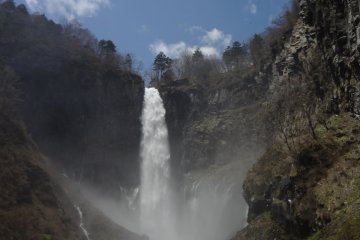
Nikko’s Kegon-no-taki Falls
Tomoko KamishimaKegon-no-taki Falls (華厳の滝) are spectacular falls that show us their mystic beauty throughout the year.

The Kegon Falls are located on Lake Chuzenji in Nikko National Park in Tochigi Prefecture. The 97-meter-high falls are one of Japan's top three waterfalls and are also considered one of the top eight viewpoints in Japan from the Showa period. Overall, they exist 12 waterfalls, all located under or parallel to a large waterfall, the other two famous waterfalls are Nachi Waterfall in Wakayama Prefecture and Fukuroda Waterfall in Ibaraki Prefecture.
They are especially popular during the fall foliage season when visitors travel to Nikko to admire the golden-orange colors. You can use an elevator there to see everything up close. In winter, the waterfalls even freeze over completely.

Kegon-no-taki Falls (華厳の滝) are spectacular falls that show us their mystic beauty throughout the year.
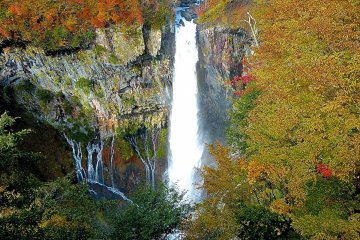
Kegon-no-taki Falls is one of the Japan’s three greatest falls (Nachi-no-taki, and Fukuroda-no-taki Falls are other two).
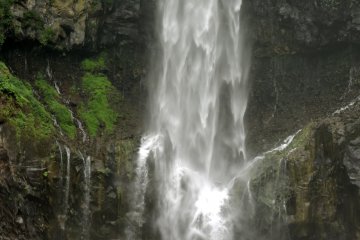
One of the most famous waterfalls in Japan is Kegon Falls in Nikko National Park.
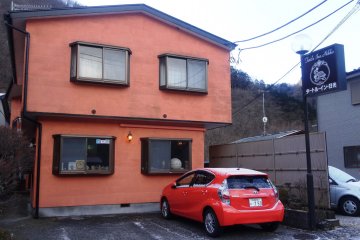
Turtle Inn Nikko provides affordable, foreigner-friendly accommodation just a short walk from the shrines of central Nikko.
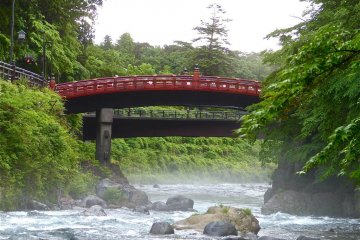
If you stay at the Kanaya Hotel, I recommend that you become an “early bird”. You will never forget the mystic view of the Shinkyo red bridge, and the emerald green river

Nikko Kanaya Hotel commands the best location for access to Nikko’s World Heritage Site. You can enjoy every bit of Nikko’s charm with this hotel as your Nikko base.
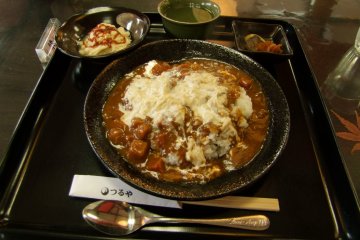
Tsuruya Restaurant, near the shore of Lake Chuzenji near Nikko, serves up a variety of cuisine that includes yuba, a famous food from the area.
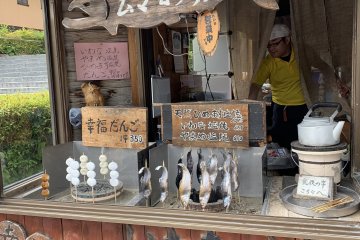
In Nikko, Oyasumi Dokoro Kiyo-Chan is a small restaurant across from Lake Chuzenji making grilled fish for you on the spot. The restaurant even serves yuba soba, a special kind of soba made with tofu. These are two famous foods you must try when visiting Nikko.

Try Nikko's specialty dish of yuba at Honke Yamabiko Restaurant, steps from the entrance to Toshogu Shrine

Lake Chūzenji (中禅寺湖, Chūzenjiko) is a scenic lake in Nikkō National Park in the city of Nikkō, Tochigi Prefecture, Japan. It was created 20,000 years ago when Mount Nantai erupted and blocked the river. The lake has a surface area of 11.62 km² and a circumference of 25 km. [Wikipedia]

Tamozawa Imperial Villa is a former imperial summer residence in Nikkō, Tochigi Prefecture, Japan. It was constructed for Emperor Taishō in 1899 and served as a hide-out for emperor Hirohito during World War II. The former imperial residence is now open for the public as museum and garden. [Wikipedia]

The Nikko Toshogu Shrine is arguably one of the most important religious sites in Japan and is located in the forests of Tochigi Prefecture. The shrine is the final resting place of Tokugawa Ieyasu, the samurai leader who united Japan in the early 1600s and the first ruler of the Tokugawa shogunate of the same name, which ruled Japan for over 250 years until 1868. Originally a relatively simple mausoleum, Toshogu was expanded in the first half of the 16th century by Ieyasu's grandson Iemitsu to create the spectacular complex that can be visited today. The shrine complex consists of more than a dozen buildings, which have been refined with countless wood carvings and large amounts of gold leaf. This is very unusual as there is usually an emphasis on simplicity in shrine architecture. Toshogu contains both Shinto and Buddhist elements. The wood carving of the monkeys who see no evil, speak no evil, and hear no evil is best known.